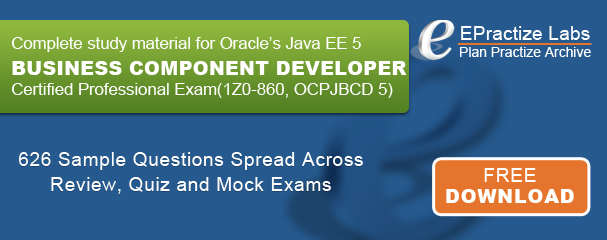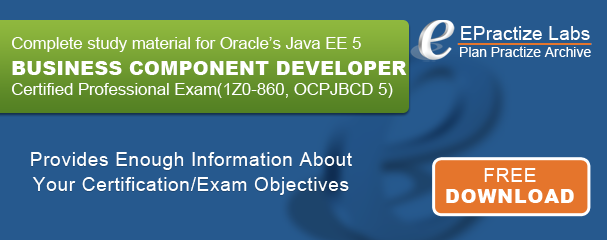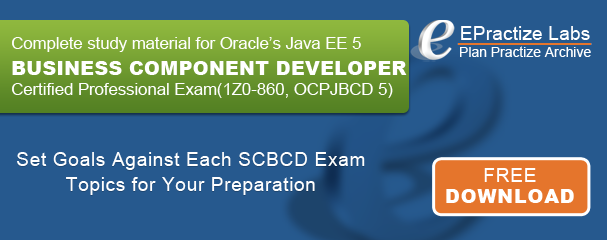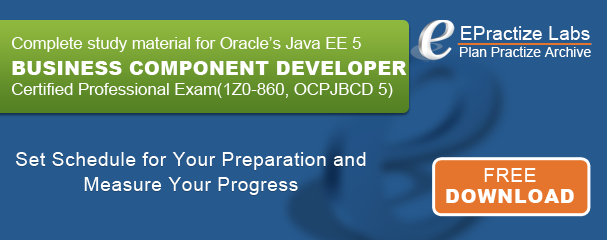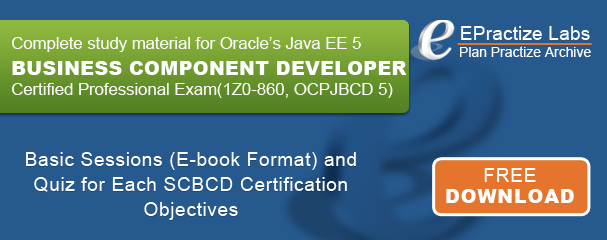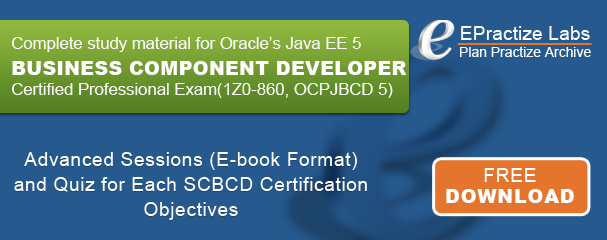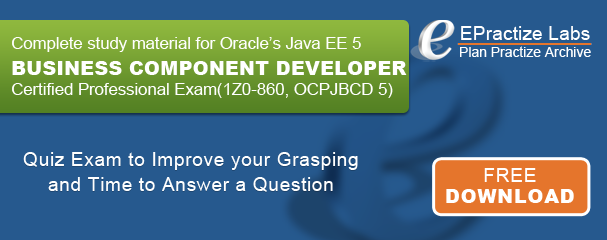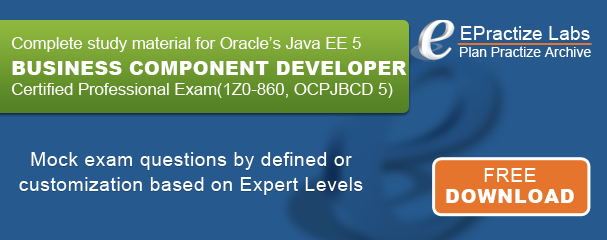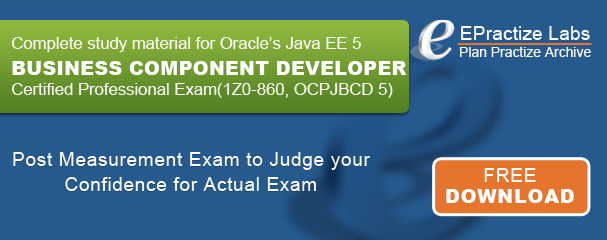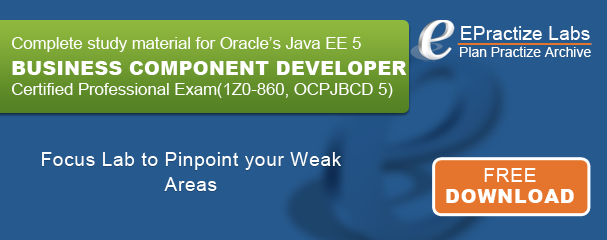| You are developing a Java EE application to maintain EPractize Labs customer details. One customer can have one or more products. |
| Select the valid code to update product details of a customer. |
| Choice 1 | @PersistenceContext
EntityManager em;
public void saveProduct(int custID, Product product) {
Customer cust = em.find("Select Customer where custID = :custID");
cust.getProducts().add(product);
product.setCustomer(cust);
} |
| Choice 2 |
@PersistenceContext
EntityManager em;
public void saveProduct(int custID, Product product) {
Customer cust = em.find("custID");
cust.getProducts().add(product);
product.setCustomer(cust);
}
|
| Choice 3 |
@PersistenceContext
EntityManager em;
public void saveProduct(int custID, Product product) {
Customer cust = em.find(Customer.class, custID);
cust.getProducts().add(product);
product.setCustomer(cust);
}
|
| Choice 4 |
@PersistenceContext
EntityManager em;
public void saveProduct(int custID, Product product) {
Customer cust = em.find(Customer.class, "custID");
cust.getProducts().add(product);
product.setCustomer(cust);
} |

